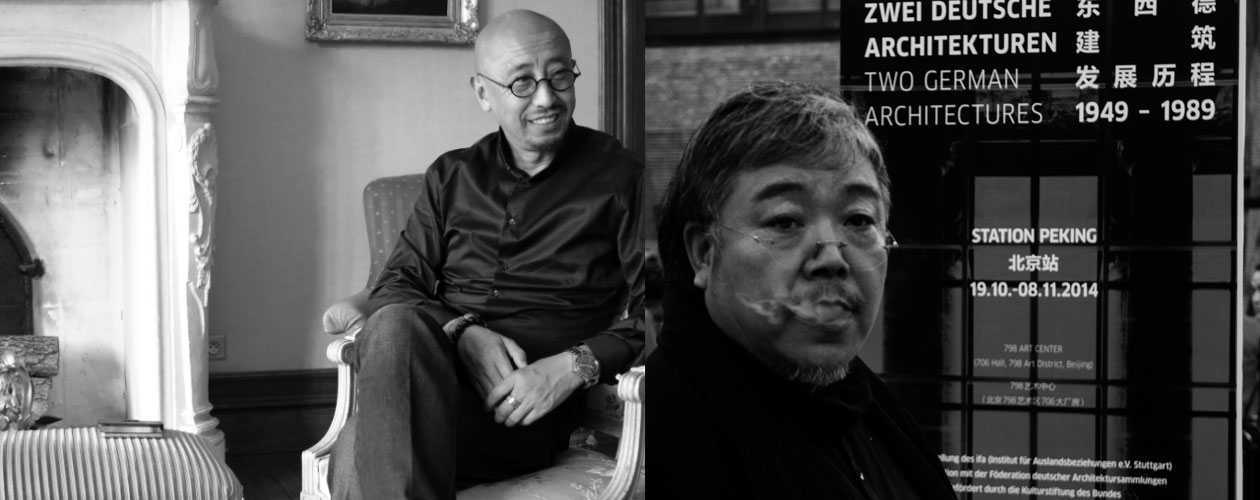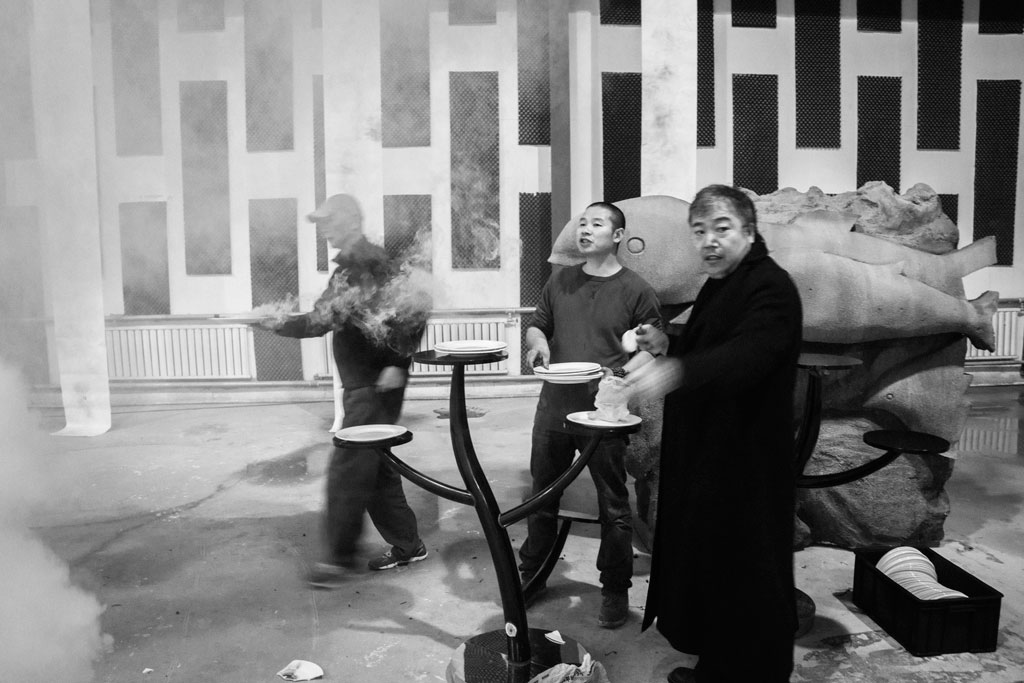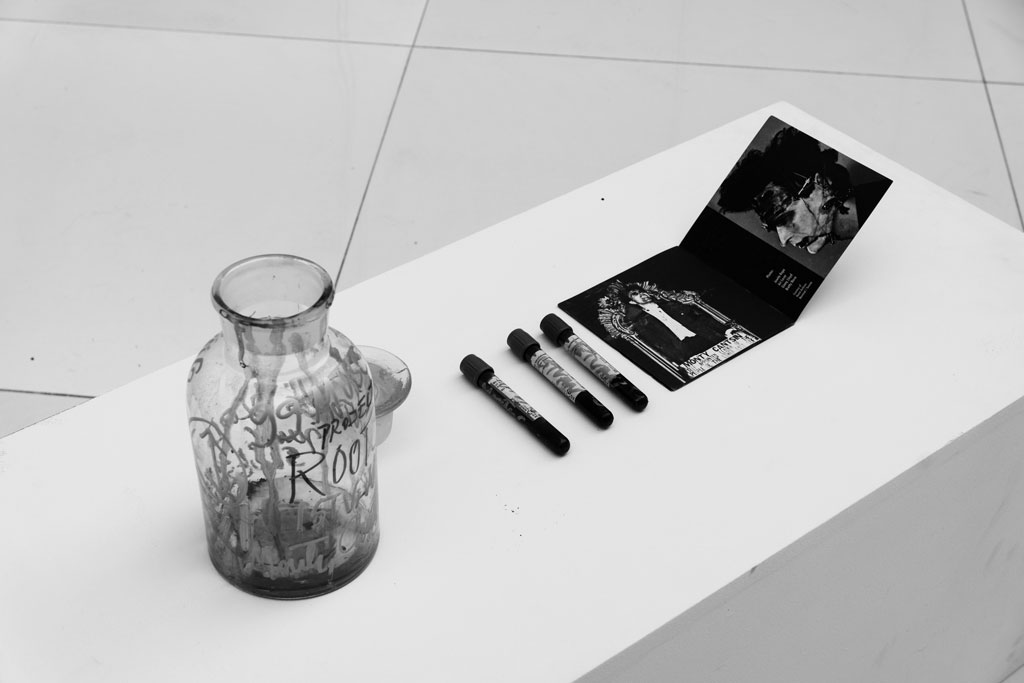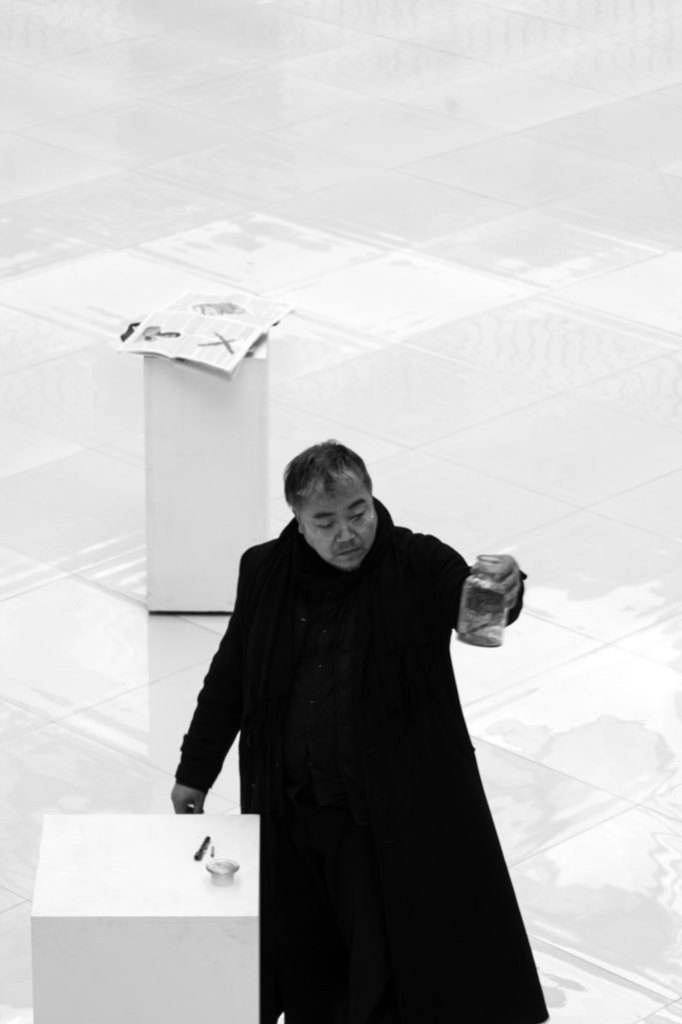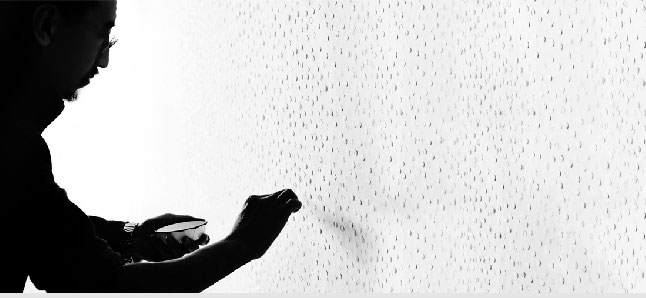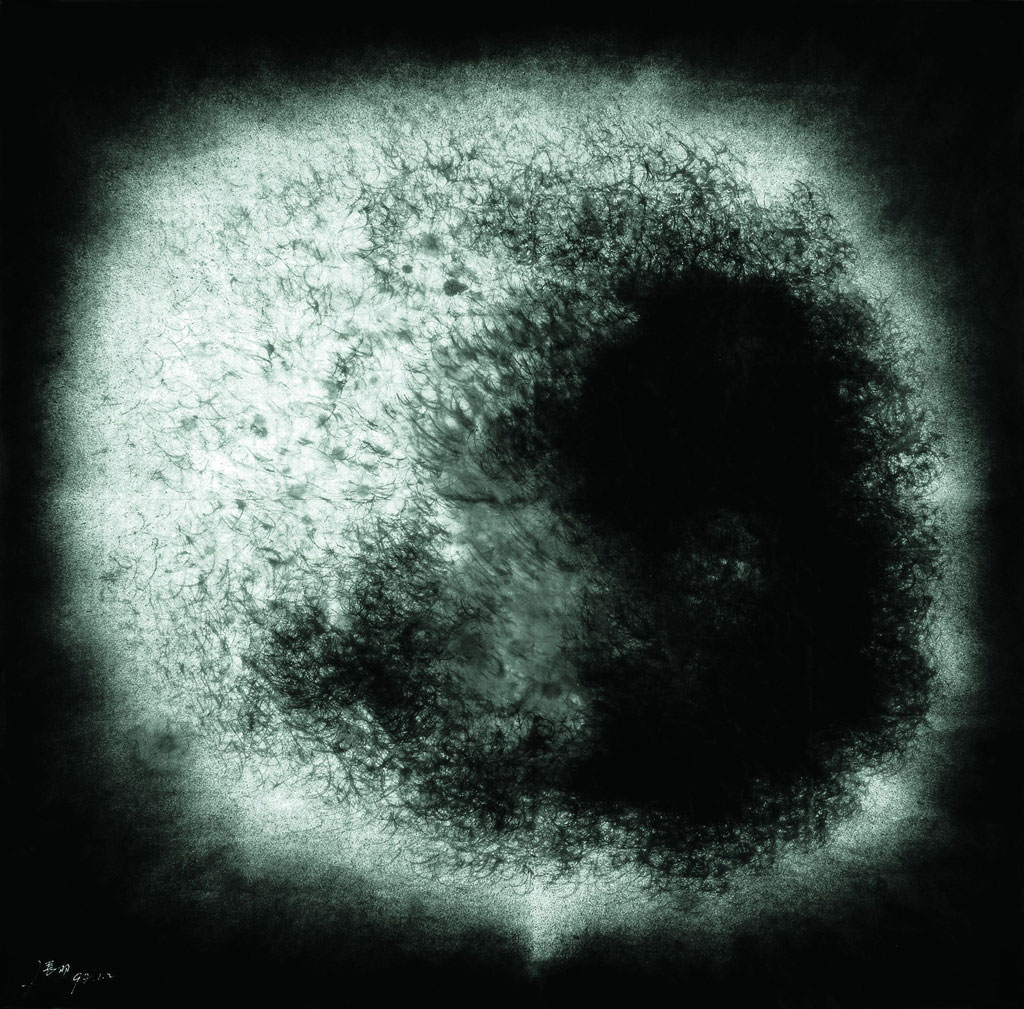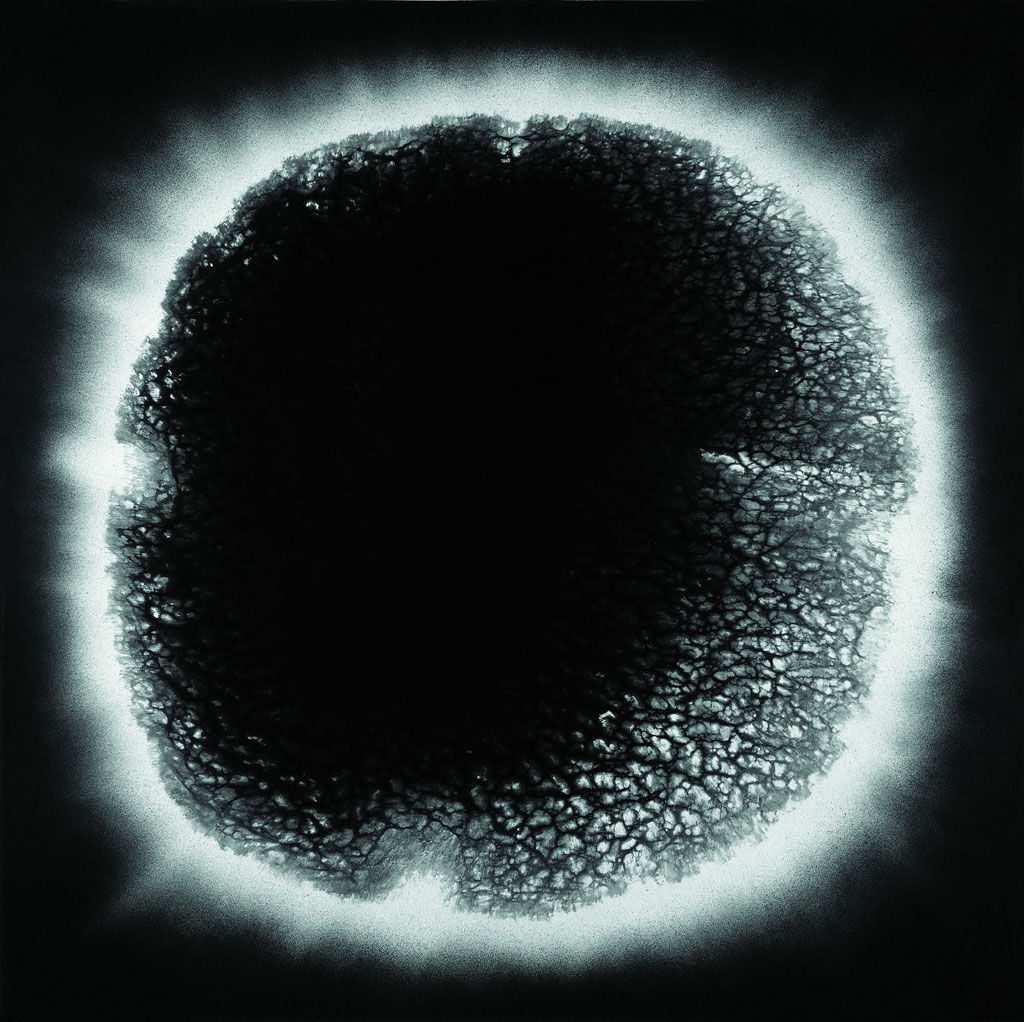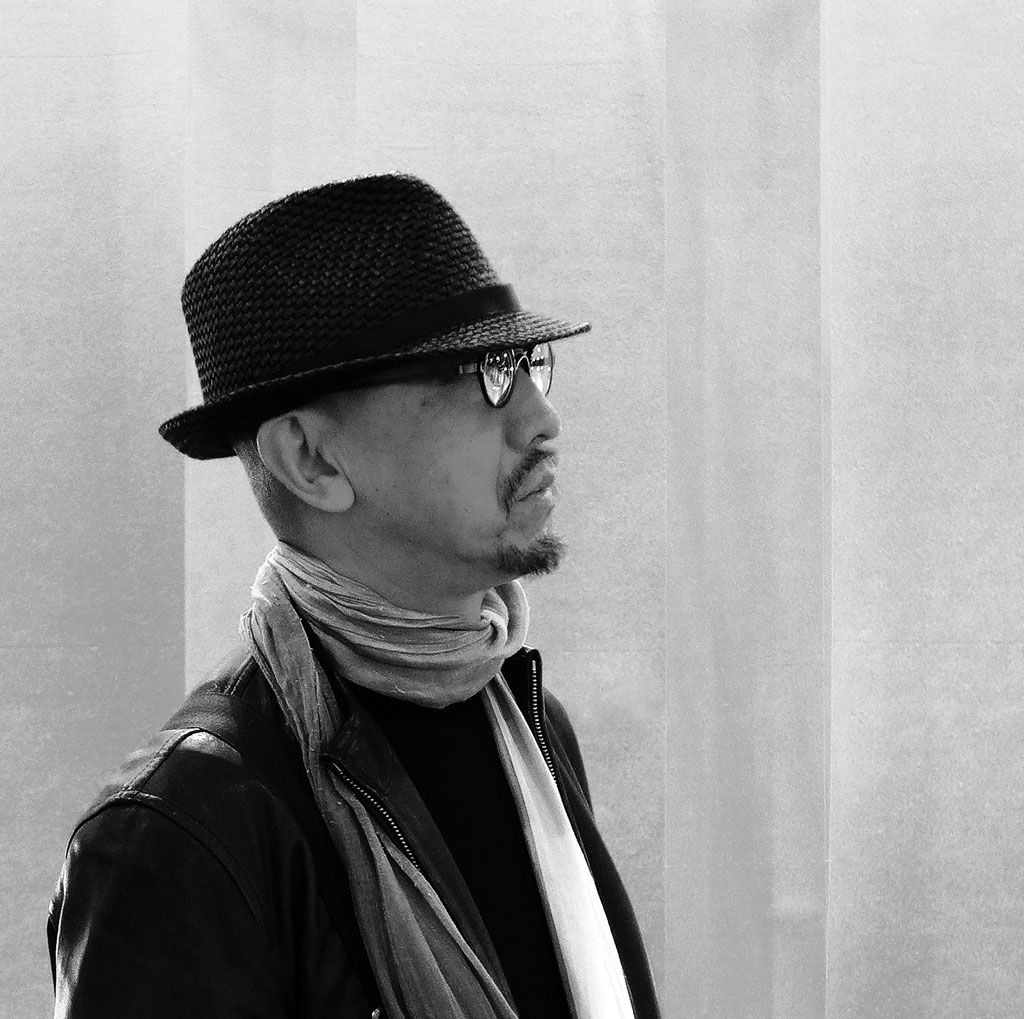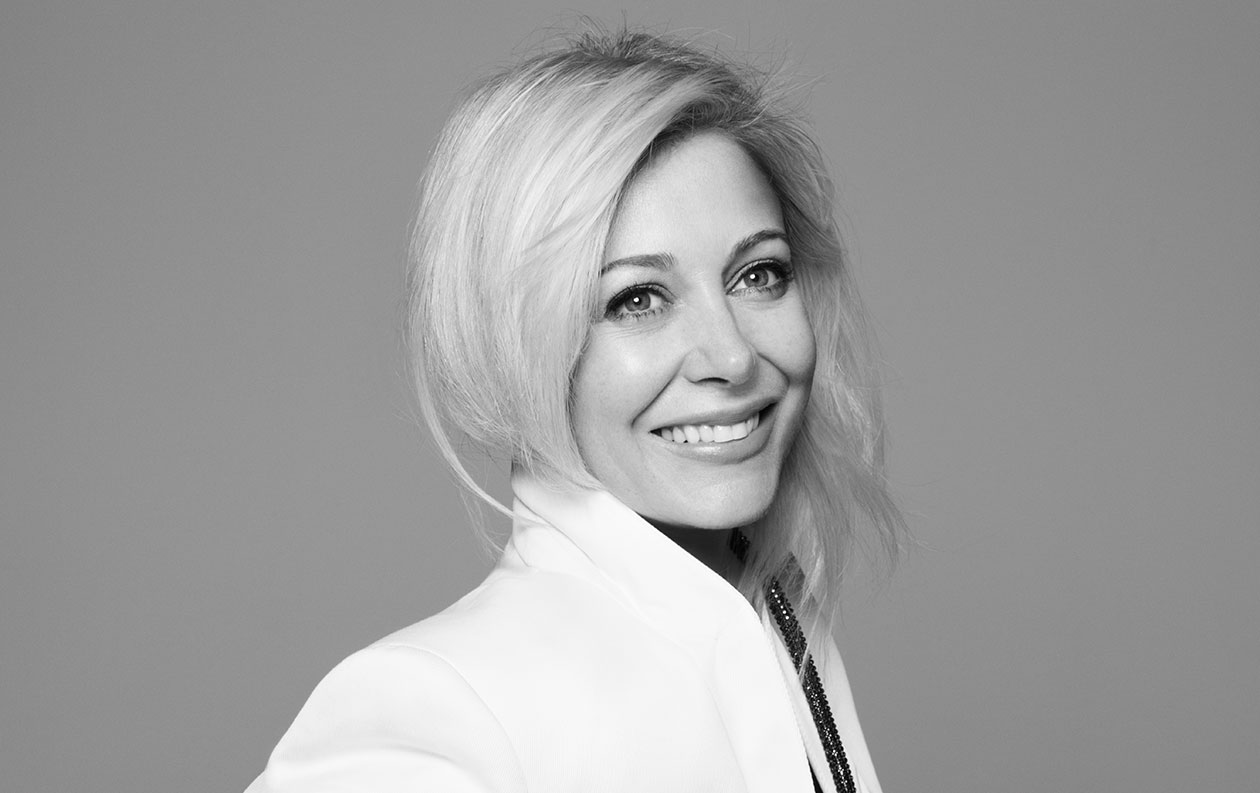
A Crystal Clear Objective
June 2, 2015
Yes We Can A Greek Food for Thought Story
June 23, 2015Laura Carniello, through the auspices of Qin Chong, meets up with two other giants of contemporary Chinese art, Li Tiejun and Zhang Yu, to reflect on Qin Chong’s concept of ‘Black and White-ism’ and is rewarded with fascinating and perceptive insights and refinements, seen through the idiosyncratic prism of Eastern thought.
Since ancient times philosophers and writers have dealt with the problem of our origins, wondering about the primitive essence of human life. Some of them have thought that, in order to get a new perspective on our original condition, mankind should go back to its ideal place of birth, but they rarely agree on the location and the features of this ancestral environment. Some others believe that we don’t need to search for a certain place, but we should carefully sound out our innermost being, looking for our hidden primary nature right inside us. The well-known visual artist, art curator and manager of the 99 Art Gallery, Li Tiejun, has his own ideas about this, and frequently asks himself: “Where do we belong?” It is for this reason too, that he willingly accepted to take part in the debate Qin Chong had started, sharing with me his reflections on the theme of “Black and White-ism”.
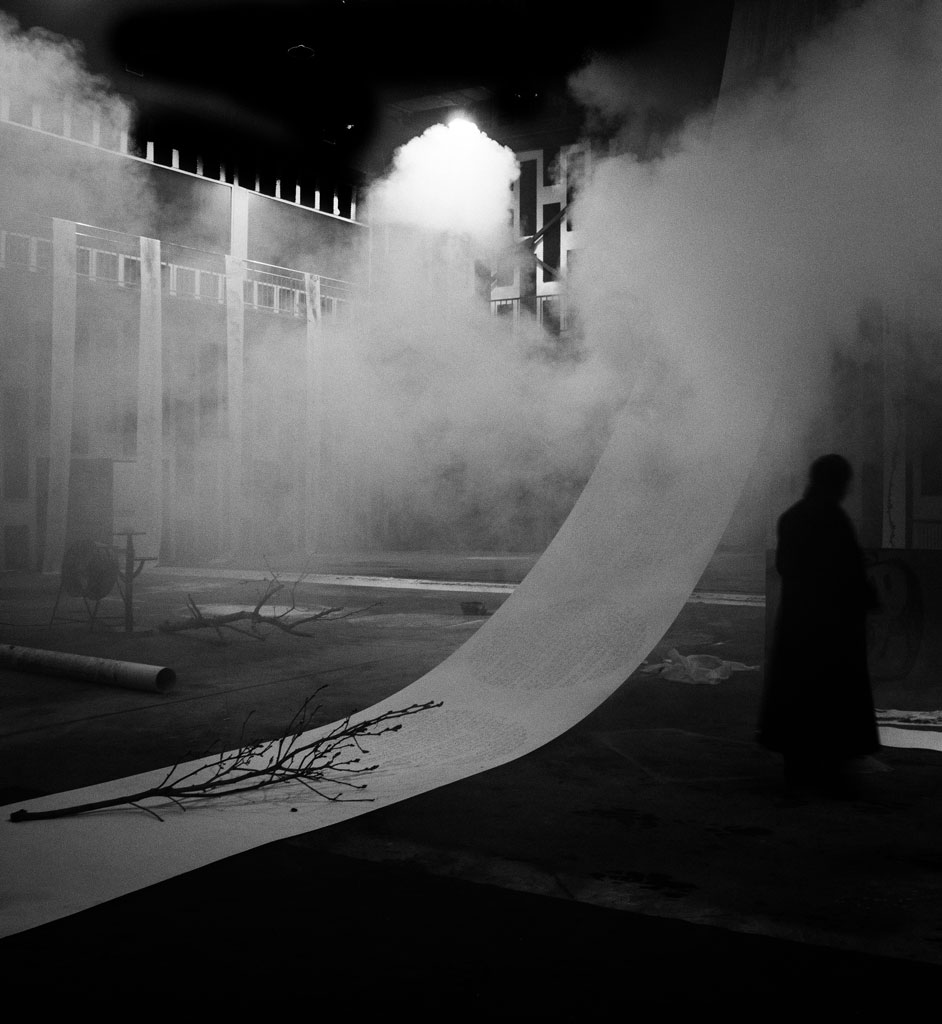
Tiejun has a remarkable international CV. After having attended the prestigious Lu Xun Academy of Fine Arts, in Liaoning province, he soon came into contact with contemporary art abroad. From 1990 to 1997 he was based in Bolivia, after which he spent three years working in Spain. Despite this intense “outlandish” experience, it is just relatively recently, particularly from 2008 onwards, that Li Tiejun changed course an artist, entering a more profound and meditative state of mind. In his ink drawings, we can observe his deep concern for contemporary society and feel his constant desire to find freedom. In his opinion, an artist, during the creative process, must focus on a precise conceptual direction, holding a unique, individual and clear position. That’s why he admires the allusive power evident in each of Qin Chong’s work, revealing as they do the artist’s authentic ideas and his own view on contemporary life. In the same way, the paintings of Li encapsulate an attitude of concern and responsibility towards the world, which surrounds him. Tiejun personally believes that “an artist must treasure his life in a responsible way, by offering to the shrine of society all he has personally experienced throughout his life.” Following this principle, he welcomed the opportunity to make his own contribution to the ongoing debate on the multifaceted theme of Black and White. Firstly, as referred to above, the intellectual content of his work already suggests a readiness to ponder on human contemporary issues and, of course, the ink wash technique chosen by him as his medium naturally leads him to consider the significance of this wide-ranging topic. Currently, Li Tiejun is expanding on the concept of “fog” (wu 雾), which became the focus of his work and his artistic language, representing the synthesis of his reflections over the last ten years.
He says: “At present, since we are facing a process of world standardisation and globalisation, the forging of a term like “Black and White-ism” and the promotion of an international research around it surely mean they have gained a new and significant importance. It is no longer an issue confined to the oriental world, but it is a cognitive medium, which transcends the stereotypical divisions and contradictions between Western and Eastern culture.”. He then moved on to the core of his home country’s heritage: “To get to the heart of Eastern civilisation we have to find out its essence. Dealing with everyday matters we are naturally aware they are not as linear as they seem to be, but instead, they need to be analysed through the prism of ancient Chinese concept of “Taiji”, namely, the coexistence of two opposites embodied in the emblematic ‘Black and White’ contradiction. In the artistic context, since a contemporary artist is meant to be an active member of the society, this concept is helpful in order to penetrate reality in a complete way.” Finally, to let me better understand how this way of thinking is rooted in his tradition, Li resorts to another image, mentioning one of the most important classics of Chinese ancient thought (ranked among the “Four Books” of Confucianism), the Zhong Yong 中庸 (“The Doctrine of The Mean”). He says: “In accordance with the principles set out in The Zhongyong, mankind can reach a natural balance in life”.
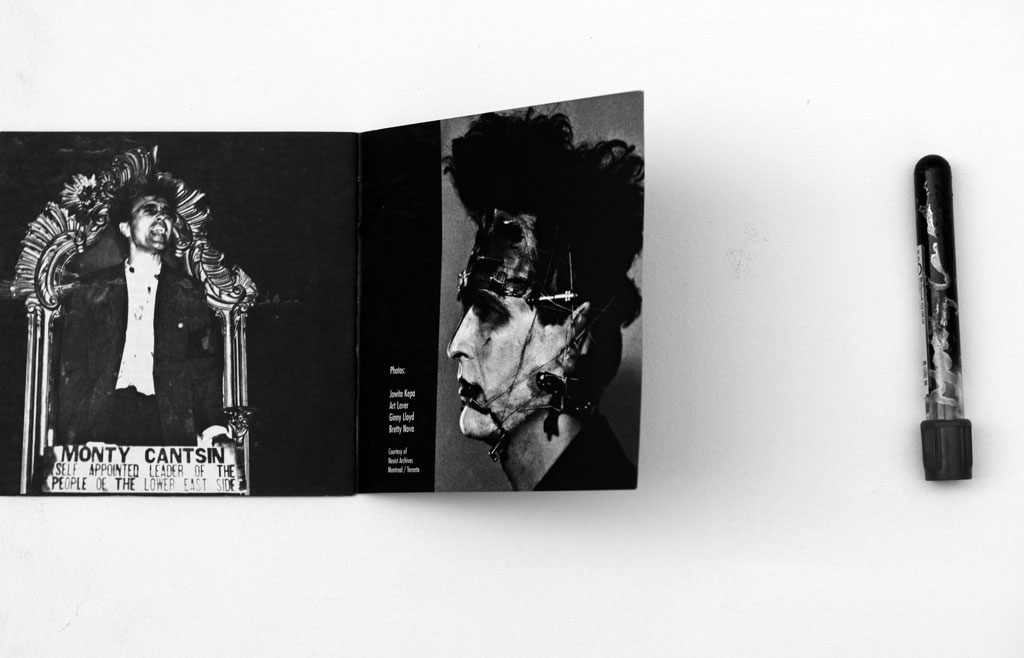
Li Tiejun knows very well that contemporary art is nothing but the result of the changes occurring in the social, cultural, political and economic environment he lives in. Furthermore, he believes that change is the basis of any development. A country which is never beset by problems rarely produces a meaningful and mature kind of contemporary art. Consequently, starting this “black-and-white-ism” debate could prove to be a stimulating and wide-ranging source of inspiration for many artists .
“People, nowadays, think in an over-complicated way and ignore the ‘Essential’” says Tiejun. “Our lives are a continual ‘work in progress’, but its foundations are unalterable. In my view, Black and White are not just colours, but represent a more composite concept. Thus, they epitomise the origin of all natural rules and have always been a dichotomy which allows man to summarise the world’s truths. Moreover, black-white is the epistemology of how men have understood the ‘noumenon’ of art throughout history. Briefly, the reason why Black and White are charged with such great significance, in this particular age, is that this pair of opposites is closely connected to the origin and the Essence of mankind’s existence.”
Li Tiejun acknowledges that Qin Chong’s desire to promote this research is not only linked to his clear artistic direction, but also to a criticism of his peers and the material world they have created. The huge progress our incessant scientific, technological and economic development has produced has undoubtedly improved the quality of our lives, but it has deprived us of its true values, distancing us from the nourishment of our spiritual world. This kind of modern misleading disorientation has caused the decline of mankind’s common nature.
Li Tiejun observes: “The questions mankind mostly ponders are those related to its existence, such as ‘Where do I come from? Who am I? Where am I going?’. In order to tackle these issues, we should try to overcome appearance and look to the essence of things. Every phenomenon is illusory. Reaching the ‘root’ of things means drawing back the veil of appearance and exploring one’s inner nature. A table, for example, is a piece of wood, if we consider its present condition, but actually its original being lies in a seed.”
In short, Li thinks that “Black and White-ism” nowadays incorporates a meaning of ‘Truth’. It is a product of Eastern civilisation, but at the same time, offers a bridge of intercultural and pleasing communication towards the West. In effect, the concept of balancing and harmonising two opposite ideas can be really precious in helping Western intellectuals find what lies in between two apparently incompatible distant poles. Thirty years ago, when China opened its markets, the influence of Western culture became more and more overwhelming; at present, instead, Western thought paradigms seem to have accepted that “doctrine of the mean” inherent to Chinese wisdom. The West does need a new way of approaching reality, a way that will lead to limitless freedom.
I next had the pleasure of interviewing Zhang Yu and he fascinatingly moved the debate on to considering beyond Black and White, looking for the middle in between.
Zhang Yu is one of the most outstanding and surely one of the most revolutionary exponents of the experimental ink-drawing wave. His innovative spirit continuously pushes him towards the development of new artistic ideas and gradually allows him to leave behind his original school of painting, as well as the universal fashion for ink-drawing he once represented. Ultimately, he has also disassociated himself from the group of abstract ink-drawers. At present, his creative language, his conceptual exploration and his theories of art have already gained great maturity and definition, and, consequently, his works are internationally recognisable.
Zhang’s art has now evolved through a process of “subtraction”: it started with a way of using materials to convey abstract ideas and, finally, reached a point where he explores the expressive possibilities of the material itself. He likes to refer to this approach as “going beyond painting”. In other words, the artist is cutting off his direct relationship with his work, trying to rediscover a sort of ‘pre-language’. There is only one interaction left, namely, the response of ink, water and paper to space.
Zhang Yu has recently published a new book “Art Makes Me”, which clarifies his artistic direction, which is in a constant process of exploration, and his creative beliefs, best summarised in the following statement: “Art is beyond categories, techniques and materials”. What really communicates the meaning of his art work is the practice, the space, the time and the overall process associated with them.
As for the concept of ‘Black and White-ism’, Zhang Yu believes it can also be treated as a philosophical question which every artist who deals in black and white comes up against, outside any one person’s breadth of knowledge. But what is the fundamental question of this “ism” according to Zhang Yu? Before sharing with us his thoughts, he mentions a relevant historical consideration: “After the reform policies and the opening up pursued in China during the 80s, Western culture literally flooded into our country, even to the point of affecting our people’s mindset in a most profound way. Our national structures seemed to let this trend happen, adopting a sort of ‘take it all in’ method of assimilation. In the last few years, artists have finally realised it was time to consider traditional matters again, which had long since been neglected. Thus, here we are, talking about this important topic.” In Zhang Yu’s opinion, the discussion initiated by ‘Black and White-ism’ still has to solve the natural relationship between the black-white and yin-yang conceptual opposites. He personally believes that these two pairs are not equivalent and their relationship has not been defined yet. Moreover, he finds that “it is not all about the two poles, but we should also consider what lies in between, that ‘middle’ no-one has focused on before”. Zhang Yu continues, “I have thought long and hard about this switchover point and I think it can also be connected to the difference between Western and Eastern speculative logic. For all these reasons, I see that this concept concerns every single sphere of knowledge, concrete matters too. The need to find a ‘middle path’ is one of my priorities.”
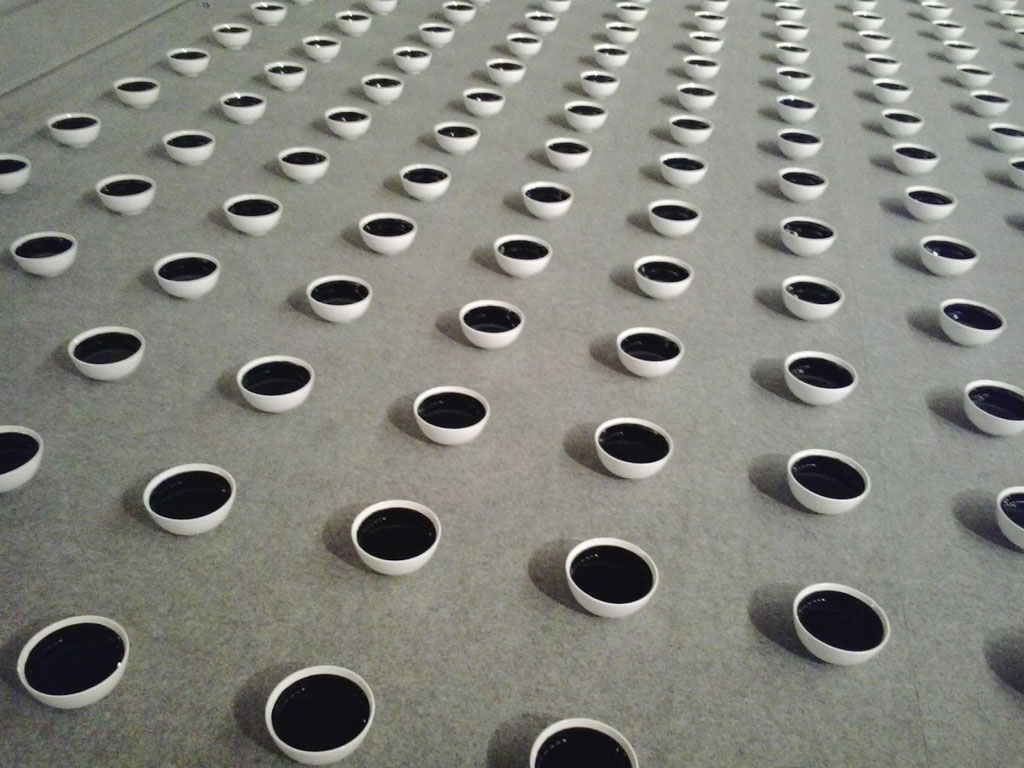
In the world of creating art, where visual manifestations display in infinite ways a personal point of view and inner individual thoughts and feelings, it is possible to reflect on deep matters without resorting to words. However, in this case, Zhang Yu, who uses the richness of his mother tongue to perfection, attempts to explain his creative principles: “Chinese traditional ink drawing is also rooted in the dichotomy of black and white, but we must understand ‘Black and White-ism’ is not the equivalent of ‘ink drawing’ or ‘monochrome painting’, nor does it merely correspond to the simple relationship between black and white. First of all, we should regard these two opposites as a whole, not as divergent parts. There are two traditional sayings in the history of Chinese painting and calligraphy that tell us “to regard black as white and white as black” and, at the same time, that “black is black and white is white”. Therefore, I am much more persuaded that the heart of the matter is definitely not the tension between two poles, but it requires exploration and contemplation of the boundless intermediate space they encompass. For this reason I do not think that the expression ‘Black and White-ism’ is a stand-alone term but it points towards a benchmark character, since, generally, black and white are mostly related to the idea of ‘artistic technique’. “In the end, Zhang Yu claims: “Black is unimportant, white is unimportant. Water is the only thing that counts. Water is the supportive element of human civilisation, it is the source of life, the origin of all living beings. Our culture is based on water, while Western culture is founded on stone. That’s why water, earth and stone are indivisible.”
Water has always been a basic component of Zhang Yu’s art works. His installation “water-ink”, for example, conveys the transformative power and the enduring properties of water. This work, in effect, came about from the gradual changes water created on other materials. The hanging paper scrolls attached to the room’s walls have their bottom edges sitting in a water tank. As a result, the water gradually vanishes, but still exists within the body of the scrolls, as you can feel it in the way the aspect of the paper is visibly changed. Therefore, water continues to exist in another form, even if, at first sight, it seems to be have disappeared. Furthermore, Zhang Yu’s creations are conceived as the sum of different elements, they are not just the reflection of his own culture, but they also epitomise the several problems people daily encounter in our contemporary world. The artist believes that searching for what lies in between the two interchangeable extremities allows us to investigate a wider range of possibilities, to discover more solutions. This might also be the right approach to overcome this general trend of emphasising the differences between China and the Western world, by treasuring them and collaborating as ‘mankind’ to find a shared, common space and, thus, a way to communicate better. ‘Internationalisation’ and ‘overcoming cultural distance’ are also the key processes which characterise the new direction of contemporary art.
Zhang Yu leaves me with a pertinent remark about the future development of international art, where hopefully the ‘Black and White-ism’ debate will play an active role. He concludes: “Nowadays a lot of international artists fail to produce excellent work because there is a general lack of issues and ideas for them to ponder, owing to the spiritual crisis we are going through. Abstract art is also facing a difficult challenge to keep its innovative power alive. What else is left for us? What possibilities are there for art not to fade away in the future? I really hope this debate will create new opportunities for meditation. Certainly, Western countries in the past introduced few important concepts into our way of thinking, but in our present globalised society, where cultural exchanges are becoming more and more frequent, perhaps this debate will be welcomed by Western scholars as a ‘breath of fresh air’ blowing from our country. Or, maybe, it won’t happen and it will remain an Eastern matter. After all, Westerners are so used to considering black and white as colours that it is not so easy for them to consider them as a matter of philosophy, in the way Chinese people do. Anyway, I doubt whether Western culture could draw great inspiration from our traditional thought, especially if we want to concentrate on the idea of a “middle truth”, forgetting the concept of predetermined opposites. In my opinion, this is a precious turning point for Chinese artists too. So let’s focus on what lies between black and white and not on that ‘ism’. The term ‘ism’, coined during the last century, should be taboo for us contemporary artists, because it can trap us into the paradigms of modernism.”
And so, Zhang Yu affirms that, according to him, in the light of this new shared knowledge, the art of ink drawing won’t have the same character as before and, hopefully, it will gradually become an international means of expression which, free from constrictions and fixed rules, will succeed in displaying an intimate and unique take on the concrete world around us.



